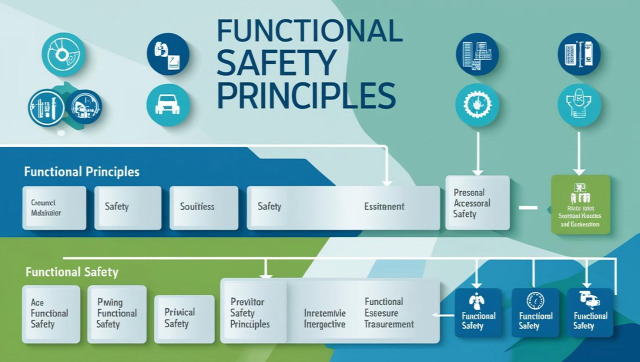The global functional safety market is experiencing significant growth, driven by the increasing emphasis on safety standards across various industries and the integration of advanced technologies to mitigate risks. Functional safety ensures that safety-related systems operate correctly in response to inputs, thereby preventing hazardous situations.

Market Overview
In 2024, the global functional safety market was valued at approximately USD 6.84 billion. Projections indicate a compound annual growth rate (CAGR) of 7.79% from 2025 to 2032, with the market expected to reach USD 12.35 billion by 2032. This growth is attributed to the rising adoption of safety systems in industries such as oil & gas, power generation, and automotive.
Key Market Drivers
-
Stringent Safety Regulations
Governments and regulatory bodies worldwide are enforcing strict safety standards, compelling industries to implement functional safety systems to ensure compliance and protect personnel and assets. -
Industry 4.0 and Automation
The advent of Industry 4.0 has led to increased automation and the integration of advanced technologies like the Industrial Internet of Things (IIoT). This evolution necessitates robust functional safety measures to manage complex systems and prevent failures. -
Rising Demand in the Oil & Gas Sector
The oil & gas industry remains the largest end-user category for functional safety systems. The need to prevent accidents and ensure operational efficiency in hazardous environments drives the adoption of these safety measures.
Regional Insights
-
North America: Currently holds the largest market share, attributed to the presence of major industry players and stringent safety regulations across various sectors.
-
Asia-Pacific (APAC): Anticipated to be the fastest-growing region, driven by rapid industrialization, increasing adoption of automation, and the implementation of safety standards in emerging economies.
Competitive Landscape
The functional safety market is fragmented, with several key players contributing to its growth. Notable companies include:
-
Schneider Electric SE
-
TÜV Rheinland AG
-
Honeywell International Inc.
-
Emerson Electric Co.
-
Yokogawa Electric Corporation
-
Renesas Electronics Corporation
-
ABB Group
-
Siemens AG
-
Rockwell Automation Inc.
-
Omron Corporation
-
HIMA Paul Hildebrandt GmbH
-
STMicroelectronics NV
These companies are focusing on technological advancements, strategic partnerships, and mergers to strengthen their market positions.
Future Outlook
The functional safety market is poised for robust growth, driven by the continuous evolution of industrial processes and the increasing complexity of safety requirements. As industries continue to prioritize safety and compliance, the demand for advanced functional safety systems is expected to rise, ensuring the protection of personnel, assets, and the environment.





